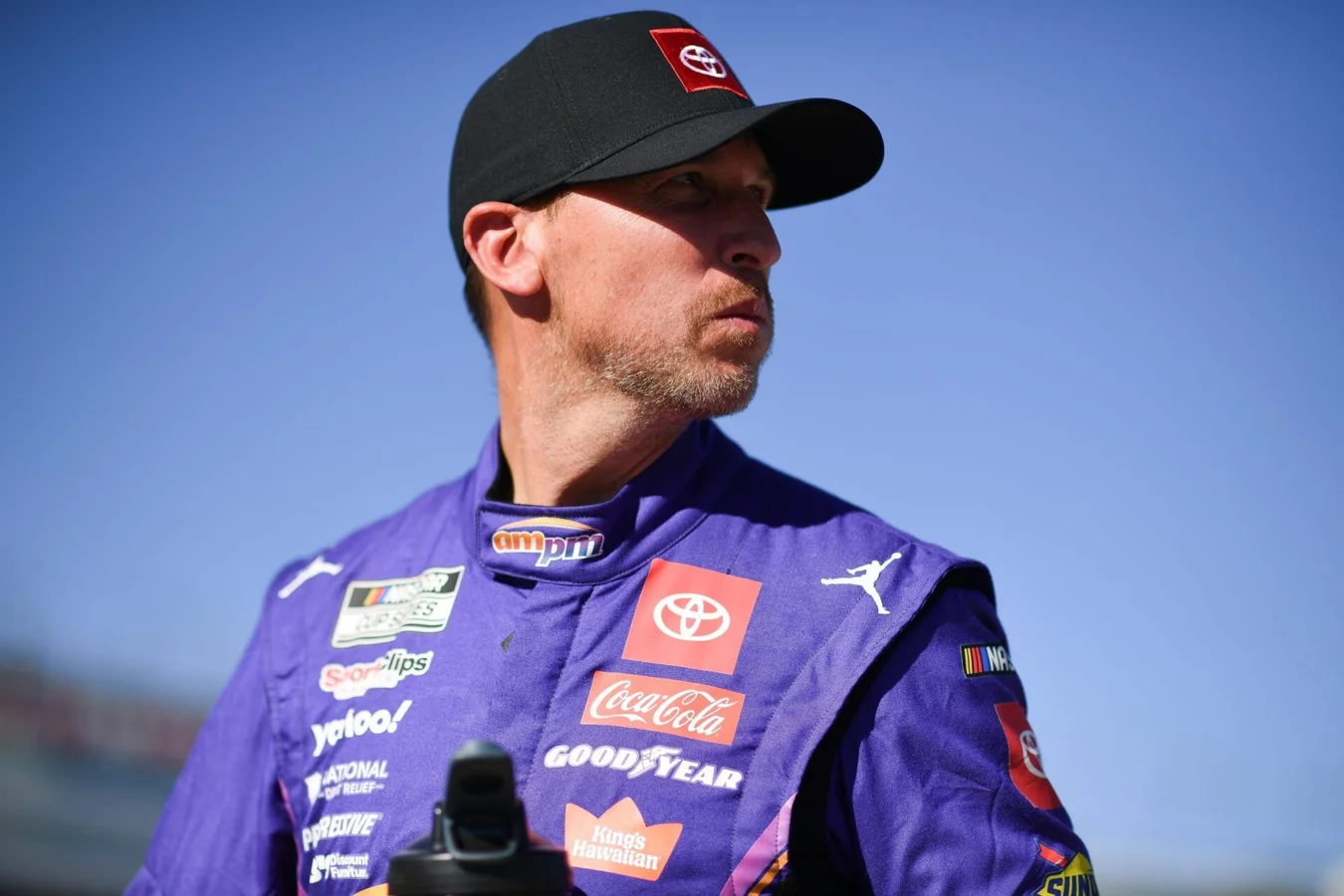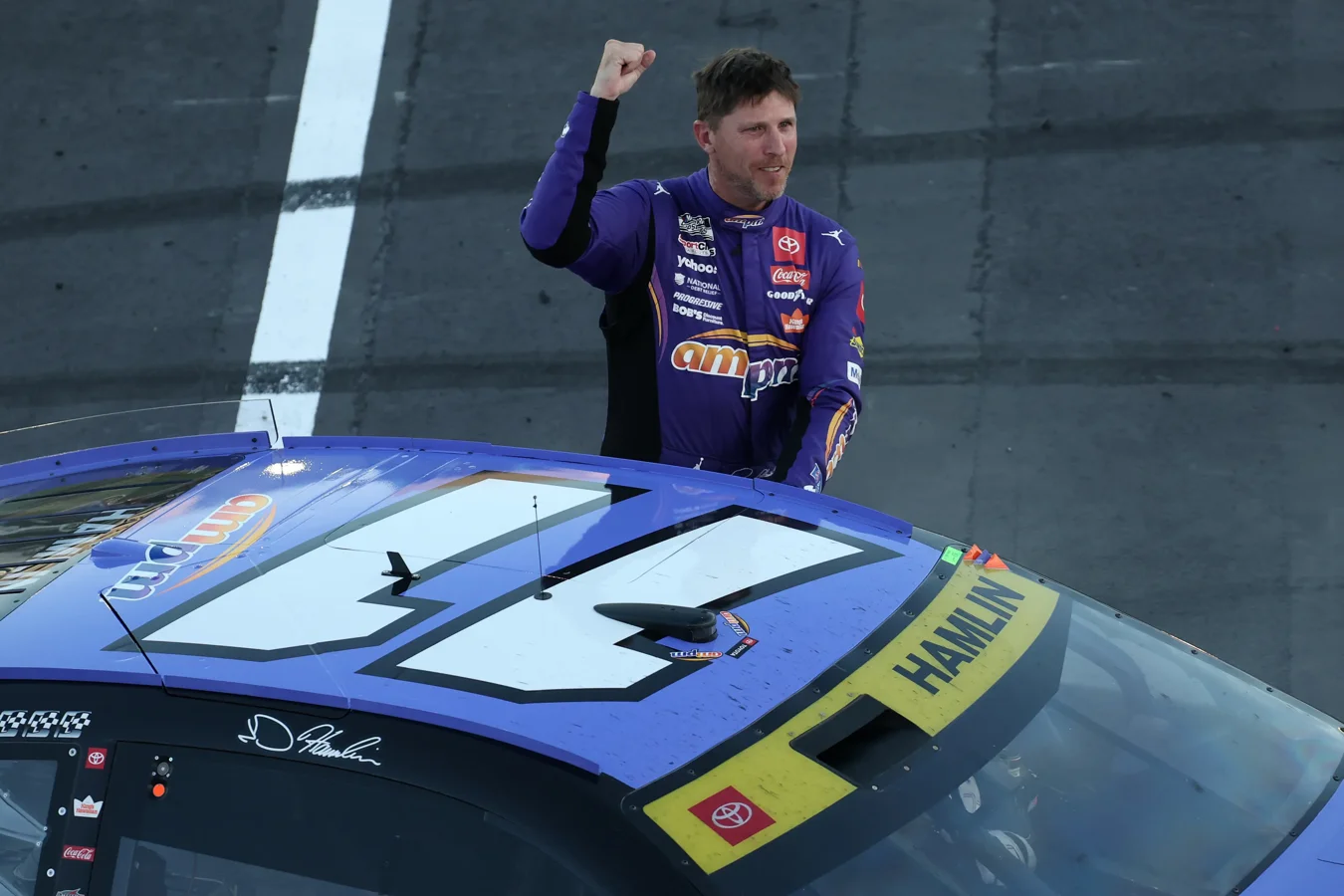The Denny Hamlin caution controversy erupted after Sunday’s Round of 8 opener at Las Vegas Motor Speedway, where NASCAR chose not to red-flag the race following a significant wreck, leading to lost laps under caution in a critical playoff moment. The decision drew fierce criticism from Hamlin, who argued the extended yellow period impacted race outcomes and created confusion among drivers.
Lengthy Caution Draws Ire After Byron-Dillon Crash
The incident began on Lap 237, when William Byron collided with Ty Dillon, leaving debris scattered across Las Vegas Motor Speedway. NASCAR responded with a caution, but restarted the race only after eight laps, deciding not to show the red flag despite having that option. As a result, precious final laps for playoff contenders slipped away under yellow, with the track remaining cluttered for an extended period. Denny Hamlin, one of the championship hopefuls, immediately voiced his frustration with how NASCAR handled the situation.
Hamlin argued that the decision to let the race continue under caution for so long was excessive. On his Actions Detrimental podcast, he explained,
And it’s not like for no reason, the track was a mess, but usually if it gets down to the end of the race and the track is that destroyed with the all the debris and it had so much debris all over it, running 12 to 15 laps or something under caution is way too much. Just red flag the thing.
— Denny Hamlin, Driver

The long caution created growing uncertainty as drivers neared the decisive stages. In the chaos, another incident quickly occurred: on the restart, cars driven by Ty Gibbs and Shane van Gisbergen made contact, causing a second caution and further tension among the field. For Hamlin, the repeated interruptions intensified his worries in the car, as he found himself back in sixth place and unsure about making up ground with so few laps remaining. Yet, amid these turbulent circumstances, Hamlin battled forward to claim his 60th career Cup Series victory.
Tense Moments on Track and Behind the Scenes
Hamlin’s perspective reflected the overwhelming feeling among some drivers, specifically those at a strategic disadvantage.
On his podcast, he revealed additional insights into his experience:
It gives a lifeline to the two tires guys, for sure,
— Denny Hamlin, Driver.
You’re keeping your spot and laps are clicking off, but it just seemed like too long of a caution. We were not gonna be racing no matter what because it was gonna take some amount of time to clean it up but certainly would have loved to have seen a red there. It made me panic a little bit that yeah, I’m hoping to just get back into the top five.
— Denny Hamlin, Driver
The situation resonated heavily across pit road, as crews scrambled under the unpredictable conditions and debris-strewn surface. Many race observers noted that pit strategies and attempts to advance positions were compromised by the drawn-out nature of the caution laps, especially as high-stakes playoff implications hung in the balance.
NASCAR Defends Decision on Las Vegas Caution
The following Tuesday, NASCAR officials addressed the growing controversy over their approach to the Byron-Dillon incident. Brad Moran, NASCAR Cup Series managing director, was questioned about the decision-making process surrounding the lack of a red flag. He offered clarification regarding how the response unfolded in real time.
Moran shared,
There was [conversation], but it was debris. There were no fluids on the track,
— Brad Moran, NASCAR Cup Series Managing Director. He added that logistical complications, such as a tow truck entering pit road for a car affected by the incident, contributed to extending the caution period by two laps. Despite these obstacles, he explained the length of the caution as reasonable under the circumstances.
We would have preferred not to, but it ended up being an eight-lap caution which is not extremely high. If there would have been fluids down, probably would have gotten red-flagged immediately.
— Brad Moran, NASCAR Cup Series Managing Director
Moran’s explanation aimed to reassure both teams and fans that safety and efficient race management remain top priorities. Nonetheless, the episode highlighted ongoing tension between NASCAR officials and competitors regarding the balance between on-track safety and maintaining a competitive, fair finish for all contenders.
What This Means for NASCAR and the Playoff Field
The aftermath of this Denny Hamlin caution controversy could influence future NASCAR officiating, especially during critical playoff races where every lap counts and driver frustration can escalate quickly. The extended yellow at Las Vegas Motor Speedway, and the subsequent discussion between NASCAR and drivers such as Hamlin, underlines the complexities of race control in high-stakes moments. As the playoffs continue, scrutiny will likely increase on NASCAR’s decisions, with all eyes on how officials weigh safety against the desire for green-flag racing to the finish.
